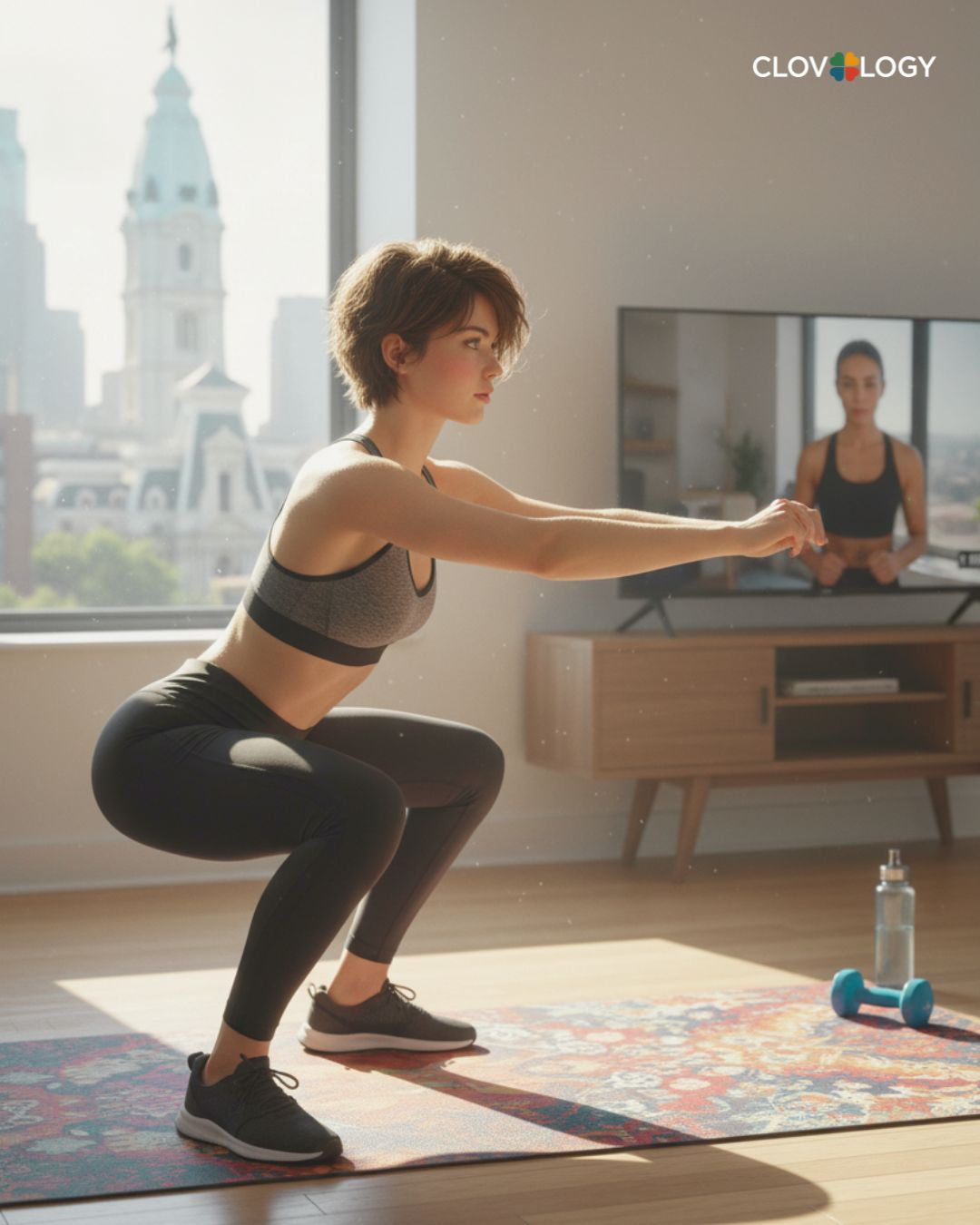We live in an era saturated with health information. With a single click, you are flooded with diets, workout schedules, and “perfect” lifestyles that promise to turn you into a better version of yourself. But one truth often gets lost in the noise: your body, mind, and social life are one of a kind. Blindly applying someone else’s method is not only unhelpful; it can backfire. The journey toward whole-person health has to begin from the inside out.
You can borrow motivation from someone else, but you cannot borrow their body. Your bones, hormones, sleep patterns, history of movement, emotions, work hours, and relationships are uniquely yours. If you want health that lasts, the starting point is simple and radical: learn your own body first.
This guide gives you a clear, practical framework to design your health across three connected dimensions: physical, mental, and social. No worshiping methods, no chasing trends. Just listening to signals, running small experiments, and adjusting with common sense.
1. Every Body Is Its Own Ecosystem
Related reading, How to listen to your body for better health and happiness
Your body is not a mass-produced machine. It is a living ecosystem that changes daily. That is why two people at the same weight can respond very differently to the same plan.
Six big reasons why “copy and paste” rarely works:
- Genetics and temperament: recovery speed, pain tolerance, calm vs. anxious baseline.
- Movement and injury history: an ankle sprain from ten years ago still shapes today’s gait.
- Hormones and body clock: early birds and night owls are built on different schedules.
- Digestion and micronutrients: one food fuels you, the same food bloats someone else.
- Background stress load: deadlines, finances, noise, parenting. Hidden weight on every plan.
- Social context: culture, commute, safety, and your circle of support or pressure.
Once you see your ecosystem clearly, you understand why a friend’s “miracle” routine sometimes backfires on you.

2. Health Has Three Dimensions: Physical, Mental, Social
Related reading, What is Health?
Most people manage workouts and weight, then forget the other two levers.
- Physical: strength, endurance, mobility, sleep quality, nutrition, resting heart rate, daily energy.
- Mental: clarity, focus, mood, anxiety level, ability to self-soothe when stressed.
- Social: relationship quality, sense of belonging, healthy boundaries, psychological safety.
These three rise and fall together. A tense week at home can wreck sleep, sink training, and darken your mood. A slow walk with a close friend can restore more than a hard session in the gym.
3. The Personalization Mindset: Test – Measure – Adjust
Treat your health like the best long-term project of your life.
- Choose meaningful goals
Not “six-pack by summer” unless it truly serves your life. Pick goals you can feel in daily experience: climb seven floors without gasping, wake up clear-headed, still have energy to play with your kids after work. - Capture a 14-day baseline
Before changing anything, just observe and log: bed and wake times, morning energy (1–10), mid-day slump, steps, meals, mood, and quality interactions. Baselines separate real effects from wishful thinking. - Pick a short list of indicators
- Physical: morning energy, resting heart rate (if available), steps, perceived effort (RPE 1–10).
- Mental: mental clarity (1–10), number of anxious spirals, minutes of deep focus.
- Social: quality conversations per week, felt connection (1–10).
- Run one small experiment at a time
Change one lever for 10–14 days: fixed sleep schedule; a 15-minute walk after dinner; two strength sessions per week; five minutes of slow breathing before entering the house; one screen-free family meal. Many changes at once make it impossible to know what worked. - Adjust to your body’s feedback
Use your log and indicators to increase, decrease, or keep steady. There is no holy method. There is only what your body responds to.

4. Body Signals Worth Learning to Hear
- Sleep: time to fall asleep, night awakenings, how refreshed you feel in the morning.
- Energy and hunger: when you feel most alive vs. most drained; real hunger vs. stress cravings.
- Breathing: shallow and fast or slow and steady.
- Resting heart rate: several days of elevated RHR often means overload.
- Digestion and skin: bloating, heartburn, flare-ups. Small flags that something does not agree with you.
- Mood baseline: irritability or apathy can be sleep debt or stress talking.
- Social rhythm: craving solitude or connection is data about your social energy tank.
5. Five Common “Copy–Paste” Mistakes
- Confusing looks with health: visible leanness does not guarantee a healthy clock, balanced hormones, or a calm mind.
- Too much, too soon: jumping to six workouts, cutting sugar and carbs, waking at 5 a.m. Your body revolts, and you quit.
- Measuring with a single ruler: the scale hides better sleep, brighter mood, and fewer aches.
- Ignoring life context: shift work, toddlers, and tight deadlines demand plans that bend to reality.
- Worshiping tools: watches, apps, and supplements are assistants. Sleep and habits are the commanders.

6. A 12-Week Plan To Personalize Your Health
Weeks 1–2: Build your baseline
- One page per day: sleep, energy, steps, main meals, mood, social interactions, notes.
- Do not change anything major. Observe first.
Weeks 3–4: Lock your sleep and wake rhythm
- Set fixed bed and wake times for 7–8 hours of sleep.
- Get morning light for 10 minutes if you can.
- Track morning energy, afternoon sleepiness, and mood.
Weeks 5–6: Bring movement online
- Step goal: 7–8k per day or +2k from your baseline.
- Strength 2–3 times per week, 30–45 minutes, moderate effort (RPE 6–7).
- Track soreness, sleep quality, resting heart rate.
Weeks 7–8: Simple, useful nutrition
- Keep the overall diet familiar. Add 1–2 upgrades: 20–30 g protein at each main meal; more veggies and water.
- Make one meal per day a slow meal: no screens, chew well.
- Track post-meal energy, digestion, and satiety.
Weeks 9–10: Mental hygiene
- Practice 5–10 minutes of slow breathing or body scan daily.
- Protect one 25-minute focus block for your most important task each morning.
- Track mental clarity and anxiety spirals.
Weeks 11–12: Social health
- Schedule two quality conversations per week with family, friends, or trusted coworkers.
- Set one small boundary, for example no email after 9:00 p.m.
- Track felt connection and social energy.
End of Week 12: Compare with your baseline. Which indicators improved? What fit your body and life? What should you drop? Write your personal “operating principles” for the next cycle.

7. Two Quick Snapshots That Prove Personalization Matters
- Matt, 32, early shift, new dad: chronic sleep debt. Matt’s best move is sleep first and easy walking. Once he sleeps, sugar cravings drop and training finally “sticks.”
- Lena, 28, office job, anxious baseline: chasing evening HIIT and sleeping poorly. Slowing down to controlled strength work, 10 minutes of slow breathing, and one screen-free dinner beats more intensity.
Takeaway: the thing you truly need is often the thing you have been neglecting, not the thing you keep adding.
8. Your Weekly Reflection Checklist
- When did I feel my best energy this week? When did I dip?
- What was different on my best day?
- Which tiny tweak delivered the clearest benefit?
- Am I short on sleep, sunlight, water, or real conversation?
- What can I remove to free up health? Example: scrolling after 10 p.m.
- What was my dominant mood? What does it say about stress load?
- What is the smallest high-impact action for next week?
9. A Minimal Starter Tool Kit
- One-page daily log: sleep, energy, steps, main meals, mood, social interactions, notes.
- Three-column indicator board: pick 2–3 for physical, 2–3 for mental, 2–3 for social.
- 10–14 day experiment loop: pick one change, log, review, then keep, tweak, or drop.
- One accountability buddy: spouse, friend, or colleague who helps you stay honest.

Personalized Health Beats Imitation
You do not need to become a smaller version of an influencer. You need to become the expert of your own body. When you hold a steady conversation with your body through small experiments, simple tracking, and patient adjustments, health grows from the inside out: a stronger body, a clearer mind, and warmer relationships.
Start tonight with one simple move: choose a bedtime and protect it. Training, eating, focus, and connection will fall into place once you can hear what your body is telling you.












